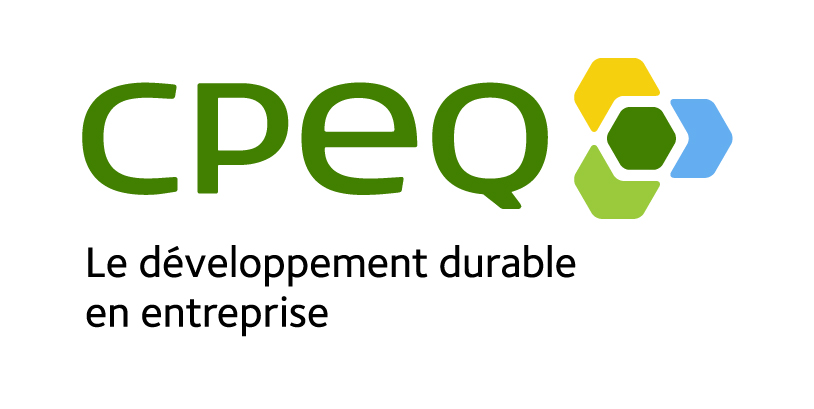 |
|
From the outset, it is important to understand that involvement in the community goes far beyond communication activities intended to make the company and its activities known. Indeed, communication activities, such as distributing pamphlets and advertising, organizing open house events or sponsoring events in the community, must be perceived as tools to support the company’s approach to community involvement.
Involvement in the community is a way to develop fairly strong ties so that the company can be perceived as an integral part of the community, and even as one of its fellow members.
In more practical terms, community involvement is characterized by a relatively sustained presence and participation in the activities specific to the targeted stakeholders.
The following subsections contain information and advice for the company to become effectively established in the community.
4.1 Establishing a Targeted and Methodical Approach to involvement in the Community
The approach to community involvement must be coherent with the corporate culture. The company should therefore not adopt behaviors that will be contrary to its culture and its business model. The company should not attempt to reinvent itself through its involvement in the community.
Involvement in the community should instead reflect the corporate culture. The decision to get involved in the community cannot be made if the company is not willing to show transparency and flexibility to the outside world. Such an approach will be doomed if the corporate culture and the executive philosophy do not allow enough transparency to open up to the community gravitating around the company. It is essential that the executive be really convinced of the need for this approach, which will require a sustained commitment. The process will also require flexibility from the company in adapting its methods, both operationally and strategically, in order to find common ground in light of the external stakeholders’ concerns.
Executives can specifically consider allowing their employees to devote time to the community during their working hours, without being financially penalized.
» Setting a specific objective
This approach cannot be accomplished over a short period and must depend on a very specific business objective. This objective will serve to anchor all the actions that will be implemented in the field, throughout the process. The objective can take different forms: reduce public complaints about operations, obtain better services from municipalities, gain support in the community for an expansion project, increase the capacity for attracting and retaining labor, improve workforce training, etc.
Setting a specific business objective will allow better targeting of the various communication actions, government relations, sponsorship, public relations or other actions that the company may implement in the field.
» Establishing a rigorous methodology
Despite the rather subjective nature of such a process, corporate involvement in the community should be methodical and rigorous to avoid scattering and wasting the human and financial resources the company plans to invest in the initiative.
- Step 1: Identify a person responsible for the initiative on behalf of the organization (champion). Identifying a coordinator responsible for community relations, the company’s true ambassador, ensures a clear, constant and efficient channel of communication with the community;
- Step 2: Get the employees to take part. Employee involvement in community life, whether as individuals or as company representatives, can be a significant asset when well supervised. However, this is not essential to the success of the initiative, especially since, more often than not, gaining employees’ commitment can be a considerable challenge for the company;
- Step 3: Identify the community into which the company should integrate. This community may include a wide variety of stakeholders, such as individuals or organizations from the neighborhood, as well as public institutions, representatives of the business community (competitors, associations, customers/suppliers, etc.), specialists and groups from outside the community (specialized pressure groups, university researchers, etc.). Appendix 7 illustrates the sphere of influence of these stakeholders;
- Step 4: Identify the key stakeholders and establish the level of influence of each one. This step lets you identify the stakeholders to target and which actions to prioritize. This step should be reviewed and updated regularly;
- Step 5: A strategy should be established for each relationship likely to impact the success of the corporate objective;
- Step 6: To discern the company’s positioning clearly in terms of achieving its objectives, it is suggested to identify the strengths, weaknesses and threats that may be associated with the company itself and with its projects. This approach allows the company to take a step back and understand where it stands, at a specific time, in relation to its geographical, economic, political, regulatory or operational environment;
- Step 7: Identify the tools and actions necessary to maximize the relationship with the community and to achieve the corporate objectives. These actions can take various forms. At this stage, it is a good idea to elaborate on the advantages and limitations of certain communication activities which can support the corporate strategy of involvement in the community.
One should remember that communication actions are only a bridge between the company and the community and that their sole aim is to support the company’s involvement in various sectors of community life. Corporate involvement in the community requires the company to take on an active and constant role in its community.
Finally, corporate involvement in the community is a constantly evolving approach. New stakeholders will appear, their level of influence may change rapidly, and the community’s issues and concerns may evolve. The strategy, tools and resources to be put in place will then have to be adjusted accordingly. It is important that the company be in tune with the changes affecting the community in which it operates.
4.2 Identify the Company’s Activities in the Community

Once the company has established its level of involvement, it should determine the activities it wants to carry out in the community. It is recommended that the company establish an internal register to record all of these activities.
» Open house
This action is a fine demonstration of transparency regarding the company’s activities and helps demystify certain concerns or misconceptions due to a lack of information. The open house activity can meet a communication objective. The company’s involvement in the community cannot
however be limited to holding such an activity, which is mainly a good way to make the company and its activities known.
» Business partnership (sponsorships)
The business partnership, sometimes taking the form of sponsorships, remains an effective tool to support corporate involvement in the community, which should however be used tactfully. While “sponsorship” can facilitate and strengthen the ties with the community, it can also cause negative feelings towards the company regarding the amounts invested or the benefits the company can expect to receive in exchange. It is important to prevent the business partnership from appearing as a way to buy community support or sympathy.
In any case, the company should administer its business partnership program carefully primarily for internal budget control reasons, but also to manage the community’s expectations and avoid disappointing important stakeholders. The business partnership cannot be a substitute for the company’s active participation and integration into the life of its community.
In addition to sponsorships, the company can create a business partnership that will allow the community to develop free of financial contribution. For example, some community stakeholders can be invited to take part in internal training sessions given by the company, while the company’s
project management expertise can sometimes serve to advance a structuring project for the community. Programs favoring the hiring of local labor or local purchasing can also be developed in partnership.
There are multiple ways to participate actively in community development. In this context, partnerships with regional development bodies take on their full meaning for the company. The company’s employees could contribute to these partnerships as part of their duties.
To maximize the impact of its initiatives, the company should also gear its actions towards regional needs. It is recommended to build partnerships with development bodies (local development centre, Société d’aide au développement commercial, Regional Conference of Elected Officers, regional environment council, chamber of commerce, school board, local employment centre). Such partnerships can create leverage that is likely to boost the impact resulting from the company’s involvement in the community.
4.3 Engagement dans la municipalité

The success of good neighborly relations depends on the good relations developed with all community stakeholders, including the municipality. In fact, it is recommended that the company communicate with public servants at different levels of the municipal administration, in addition to elected municipal officers. All these stakeholders are likely to have a direct relationship with the company’s neighbors and may be called upon to play an important role in the company’s good neighborly relations.
The following subsections contain information and advice to help the company engage in fruitful relations with the municipality.
» Establishing good relations with the various levels of the municipal administration
Amongst the people with whom it is recommended to communicate in the municipal administration are the representatives of the urban planning and environment departments. These two departments should be a point of entry for the company. It is essential for the company to take the lead and ensure that the officials know the company, its operations and its representative.
These individuals will be able to get rapidly in touch with the company should they receive complaints or if regulatory changes are planned. Whether it be the representatives of these two municipal departments or of other departments, it is appropriate to target all the departments likely to interact with the company, including those likely to deal with neighborhood complaints.
» Meeting the municipal representatives
The company should set the frequency of its meetings with the municipal representatives. This frequency may vary depending on the representatives and their department. The company should at least ensure that the municipal representatives can get easily in touch. In more structured municipalities, the company can establish a schedule of meetings, in collaboration with the municipality. These meetings will make it possible to present and discuss the company’s actions and projects, as well as those of the municipality. These exchanges allow both parties to adjust their planning according to the other’s needs.
» Informing the municipality about the company’s activities and what they contribute to the local community
Every company gains from preparing a communication plan to inform the municipality about the company’s activities and about the resulting benefits for the local community. The municipality will appreciate the company’s dynamism and involvement in its territory.
» Giving the municipality regular presentations on the improvements made to the processes, the nuisances resulting from the company’s activities and the list of actions taken to reduce and, if possible, eliminate these nuisances
It is important to give the elected municipal officers regular presentations on the improvements made to the processes, the nuisances resulting from the company’s activities, and the list of actions taken to minimize and, if possible, eliminate these nuisances. This presentation can be
given during meetings planned with the municipal representatives.
Acting in such a way will ensure that the municipality knows the company’s issues and its commitment to the community while remaining a “good neighbor“.
» Raising the municipality’s awareness of the benefits of maintaining harmonious relations between the company and the neighborhood
Municipalities are generally aware that public peace depends on good cohabitation with everyone, including industrial/residential cohabitation. It would nonetheless be preferable for the company to pursue its “proactive” approach and educate the municipal representatives, so that they are made aware of the benefits of maintaining harmonious relations between the company and its neighborhood.
As already mentioned, the municipal representatives are sometimes the people who are in direct contact with the company’s neighbors. In these cases, the way they act will greatly influence the relationship between the company and its neighbors. The municipal representatives should be
aware of this fact.
» Raising the municipality’s awareness of the importance of developing buffer zones between residential and industrial zones to minimize the risks associated with the company’s activities and to better protect the public
During meetings with the municipal stakeholders, the company must discuss the necessity of preserving buffer zones between residential and industrial zones and the municipality’s responsibility in developing these buffer zones. Indeed, these buffer zones are the guarantee of good cohabitation. The municipality could for instance create such a buffer zone by allowing only commercial facilities near industrial facilities and refusing any residential development.
Finally, at this stage it is recommended that the company monitor information pertaining to the development plans of the regional county municipalities (RCM) and the municipal by-laws.
4.4 Monitoring Changes to the Development Plans of the Regional County Municipalities (RCM) and to Municipal By-laws

Ideally, the company should know the RCM development plans and ensure a watch (monitoring of information) on the proposed changes to municipal by-laws. In effect, developments which bring residential zones closer to industrial facilities can often be anticipated by keeping track of zoning changes that will make them possible. Reducing the distance between the zones creates conditions conducive to neighborhood disturbances and should be avoided whenever possible.
The company can also try to bring various prevailing problems to the attention of the RCMs and the various municipalities in order to encourage them to improve existing standards or impose new ones4.
It is desirable to explore the idea of sustained collaboration with the municipality by creating a joint “municipal-industry” committee with the municipality and even with the RCM, because the company is a kind of partner for these organizations. In this context, the company and the municipality could, for example, plan the long-term zoning. The company could also know the municipal and regional intentions before certain proposals reach the publication stage. If the municipality comes to see the company as a partner and a stakeholder who shows proof of collaboration, it can then maintain a relationship with the company and communicate relevant information. However, in practice, the municipalities and RCMs do not always dare to communicate their intentions. There is reason to hope that a sustained relationship between the municipality and the company, within the framework of a joint committee, can succeed in modifying these behaviors to increase municipal transparency.
The following sections contain information and advice so that the company ensures effective monitoring of information on the development plans of the regional county municipalities (RCM) and municipal by-laws.
» Making representations at the regional and municipal level to prevent the development of residential zones closer to industrial zones
The RCMs are responsible for the adoption of development plans, which constitute the development framework of a territory. The municipal by-laws must conform to the development plan in force. Any amendments to the plans and the municipal by-laws must be the subject of public announcements, in the local newspapers, for example, and of consultations. The companies should thus monitor information regarding changes to the development plan and the municipal by-laws, so that they can intervene rapidly and point out problems that could arise from identifying as residential a development zone located near an industrial zone.
» Monitoring the media (local newspapers or Internet) used by the municipalities to detect the announcements concerning zoning changes and find out the dates of municipal meetings and their agendas
It is the company’s duty, as an interested party, to monitor the local media and the municipalities’ websites in order to obtain information on the dates and agendas of the scheduled meetings, and any proposal to amend the by-laws. The company can then intervene in the consultation process
to object to the development of a residential zone closer to an industrial zone.
» Attending each RCM meeting where the major guidelines concerning the development plans are discussed
To ensure this kind of monitoring, a company should assign a person responsible for each municipality in which it operates. This approach requires an investment in human resources. In addition, the time investment will increase when it is necessary to intervene. It would be desirable for
the company to attend the RCM meetings where the major guidelines of the development plan are discussed, as well as the municipal meetings when zoning changes are discussed. It becomes essential for the company to formulate a clear message to emphasize the importance of sustainable
land use planning, both for future residents and for industries.
» Attending RCM and local municipal meetings
Apart from meetings specifically devoted to development plans and zoning by-laws, it is desirable for a company representative to attend municipal and regional meetings regularly in order to have a good understanding of the concerns of residents and elected officers, to develop ties and present the company’s contributions and concerns, including the importance of preserving the buffer zones between the industrial and residential sectors.
The next chapter presents the different neighborhood tension scenarios that may arise between the neighborhood and a company, while proposing a process to follow when these tensions arise.
- 4. The CPEQ believes it is important to remind the readers that any intervention aimed at influencing a municipality or an RCM can constitute an activity that must be reported to the Lobbyists Registry.

















